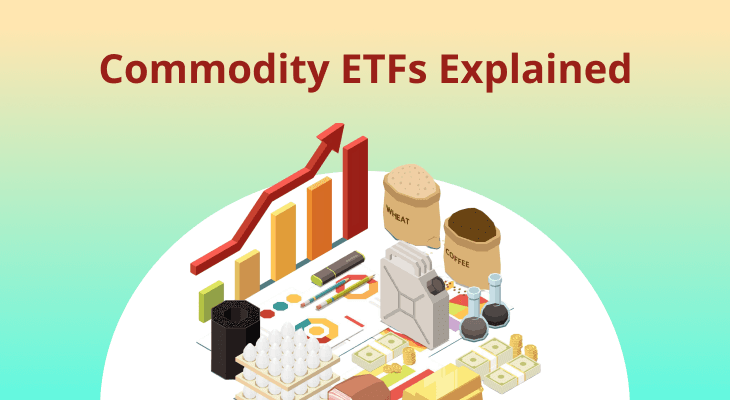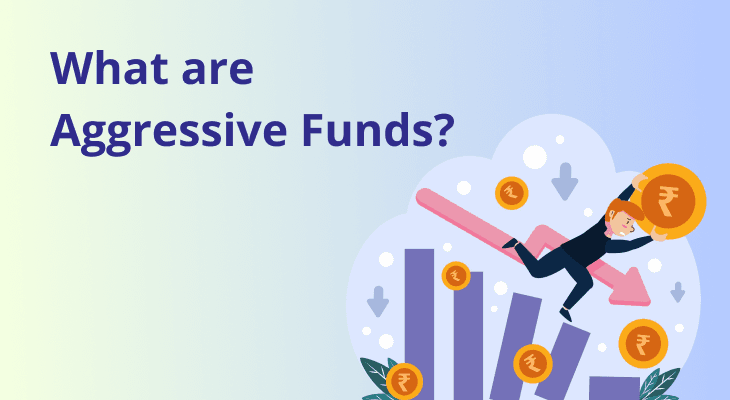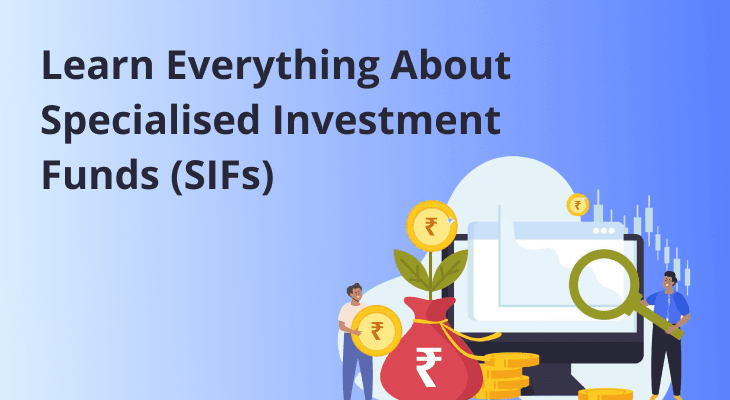
The Future of ETFs: Trends and Predictions
Exchange-traded funds (ETFs) are investment funds traded on stock exchanges, offering diversified portfolios like mutual funds but with the flexibility of stock trading. In the recent few years, passive investing is surging worldwide and in India too, ETF investment has grown rapidly. AMFI data shows that passive fund AUM (largely ETFs and index funds) hit ₹11.13 lakh crore by March 2025, up 21% year-on-year.
Equity ETFs alone held about ₹ 6.28 lakh crore of that. Over five years, passively managed equity AUM in India climbed by 553%. These ETF trends reflect rising investor interest. They offer broad market exposure, relatively low costs, and 24×7 trading access. As an investor, you can now gain exposure to entire markets, sectors, or themes through ETFs, often at a fraction of the cost of actively managed funds.
The Rise of ETFs
In the past decade, ETFs have moved from niche to mainstream in India. The first Indian ETF (the Nifty BeES ETF) was launched in 2001, and today India has over 140 equity ETFs and 20+ debt ETFs. They have gained popularity due to cost-effectiveness, liquidity and ease of trading.
ETFs typically have much lower expense ratios than actively managed funds and are often even lower than traditional index funds. You can buy or sell ETF units during market hours just like any stock, providing handy liquidity. These advantages have led to a boom in ETF trading: in FY2024 the NSE saw over ₹ 1.19 lakh crore of ETF trades. As investors become more price-conscious, ETFs’ transparency and low fees make them an attractive way to participate in India’s growth.
Growing Popularity of Thematic & Sectoral ETFs
Beyond plain index trackers, thematic and sectoral ETFs are drawing attention by targeting specific ideas. A sectoral ETF follows a single industry, for example, a Nifty Bank ETF (banking sector) or Nifty IT ETF (technology sector). A thematic ETF focuses on a broader trend, such as an “India manufacturing” theme or a consumption-themed portfolio. Indian examples include the Bharat-22 ETF (major government-owned enterprises), CPSE ETF (central public sector undertakings), and industry funds like a Nifty Pharma ETF or a Nifty FMCG ETF. These let you bet on high-growth areas.
In 2024 alone, funds saw record inflows into sectoral and thematic strategies, indicating investor appetite. However, you should note these can be more volatile. As per an analysis, there are over 20 thematic ETFs in India (covering topics like consumption, infrastructure, and manufacturing), but most trade a bit thin.
Only Bharat-22 and CPSE enjoy decent liquidity, while others may have wider bid/ask spreads. Despite this, thematic/sectoral ETFs let you fine-tune your allocation. If you strongly believe in India’s IT boom or rural consumption story, a sectoral ETF can give focused exposure. Just remember the risks, a heavy sector exposure can swing widely if that sector underperforms.
Smart Beta and Actively Managed ETFs
Smart Beta ETFs are a middle ground between index and active investing. They follow alternative index rules (factors) instead of market-cap. Value ETFs pick cheaper stocks, momentum ETFs pick high-trending stocks, quality ETFs pick firms with strong balance sheets, or low-volatility ETFs pick less volatile stocks. In India, several smart-beta ETFs exist now.
Examples are the Nifty Low Volatility 30 ETF (selects 30 least volatile Nifty stocks) and NV20 ETF (Nifty 50 Value 20 Index). There are funds tracking quality, momentum and value factors, and more AMCs are launching similar ETFs regularly. If you seek a bit of active-style strategy within an ETF structure, smart beta can be a good option.
Actively managed ETFs go even further: the fund manager chooses stocks in real-time, just like a mutual fund, but units trade as ETF shares. Currently, India has very few pure active ETFs. Most domestic ETFs still passively track an index. Investors use actively managed mutual funds for stock-picking. It’s possible that regulatory changes (like SEBI’s new frameworks) may allow more active ETF launches. Globally, major firms are rolling out active ETFs, so it’s a trend to watch out for. For now, smart beta ETFs offer a semi-active option, while fully active ETFs in India remain rare.
Cost Efficiency and Digital Distribution
One of the key attractions of ETFs is low cost. By design, ETFs have lower expense ratios than most open-ended funds. They avoid entry/exit loads and any gains are taxed like equities. ETFs have lower expense ratios as compared to any actively managed mutual fund and are even lower than index funds. That cost edge means more money stays invested. In addition, being exchange-traded, you pay only trading commissions (which can be very low with discount brokers), and benefit from intraday pricing.
Digital platforms have made ETF trading accessible. You can use online brokers and mobile apps to buy ETFs just like stocks. Many apps provide ETF screeners and research tools. This digital distribution is widening the investor base, even new investors who routinely trade stocks can easily allocate to ETFs. If you have a trading account, you already have ETF access, no separate paperwork is needed. Some apps even allow systematic investment plans (SIPs) into ETFs via automated schedules, further smoothing entry. Overall, the ease of buying and low costs are driving retail ETF trading in India.
Predictions for the Next 5–10 Years
Looking ahead, ETFs in India are set for further evolution. Here are some trends you might expect:
- More Thematic and Sector ETFs: We’re likely to see new themes (for example, green energy or ESG ETF, digital economy, cybersecurity) and additional sector ETFs (e.g. media, utilities). In 2024, 31 new ETFs were launched in India (raising about ₹1,248 crore), including funds for healthcare, EV/autos, gold and silver, midcaps and momentum strategies. This variety suggests ETF offerings will keep expanding to cover emerging sectors.
- Smart Beta Expansion: Factor investing ETFs, including those focused on quality, dividend, and momentum, are expected to grow in popularity, along with the introduction of new smart-beta indexes. Also, expect more equal-weight index ETFs (e.g. Nifty50 Equal Weight ETF) and other alternative-weight strategies as investors seek better risk-adjusted returns.
- Global & Niche ETFs: Future regulations may permit more India-based ETFs that invest abroad (foreign index or overseas stocks). Already funds tracking Nasdaq-100 and S&P 500 exist as mutual funds; similar ETFs could appear. Additionally, niche themes tied to Indian policies or global megatrends (e.g. Indian manufacturing, agriculture, fintech) could become ETF categories.
- Debt and Commodity ETFs Growth: As the bond and debt market deepens, expect more debt ETFs (government bond, corporate bond ETFs) to emerge, offering fixed-income exposure. Commodity ETFs (like silver, and crude oil) are also possible if investor demand arises. Gold ETFs will continue drawing inflows as a hedge.
- Digital and Retail Adoption: With continued fintech innovation, even more retail investors will join. We may see fractional ETF investing (buying small portions of expensive ETFs) or ETF-based robo-advisory portfolios. Brokers might launch thematic ETF baskets or retirement-oriented ETF solutions to attract savers.
- Regulatory Support: SEBI’s push for ETFs should ease launches and reduce costs. Lower settlement requirements and relaxed caps on sponsor stock holdings may encourage new ETF schemes. If rules eventually allow truly actively managed ETFs, we could see domestic launches mirroring global trends.
Overall, the outlook is bright, as awareness grows and product choices widen, ETFs are expected to capture a much larger share of India’s investment flows (similar to how passive funds now exceed active funds in some global markets.
Conclusion
ETFs represent a major shift in how you can invest in India. They combine the diversification of funds with the tradability of stocks. With low costs, transparency and ease of access, ETFs are becoming an attractive option for both new and experienced investors. In India, ETF investment is still growing; it’s not too late to make them part of your strategy. By balancing broad index ETFs with thematic or smart-beta ETFs, you can customise your portfolio to your goals. Keep an eye on new launches and regulations, the coming years should bring more choices, from novel sector ETFs to possibly active ETF offerings. Whether you want core equity exposure or to play a specific theme, ETFs provide a flexible, cost-efficient way to participate.
FAQ
What is an ETF and how does it work in India?
An Exchange-Traded Fund (ETF) in India pools money from investors to invest in a group of securities, typically tracking an index like Nifty 50 or Sensex. You buy and sell ETF units on stock exchanges through a demat and trading account, just like shares.
What is the difference between a thematic ETF and a sectoral ETF?
A thematic ETF targets a broader investment theme such as ESG, electric vehicles, or manufacturing, which may span multiple sectors. A sectoral ETF, on the other hand, focuses solely on one industry like banking, pharma, or IT.
Can you invest in ETFs using SIP?
Yes. While ETFs do not have an in-built SIP feature like mutual funds, many brokers and apps allow you to create custom SIPs in ETFs by scheduling periodic investments manually or automatically.
How are ETFs taxed in India?
Equity ETFs are taxed like shares. If sold within one year, the gains are taxed at 20% (short-term). If held for over a year, gains above ₹ 1.25 lakh are taxed at 12.5% (long-term). Debt ETFs follow different rules and attract tax based on your income slab.
What are the advantages of ETF investment over mutual funds?
ETFs offer intraday trading, lower expense ratios, and no exit load. You also get transparency, as ETFs disclose their holdings daily. However, unlike mutual funds, ETF investments require you to manage your trades yourself.
What is an actively managed ETF?
An actively managed ETF does not follow a fixed index. Instead, the fund manager actively chooses securities based on research and market analysis. This can offer higher return potential but usually comes with slightly higher fees.
Are ETFs a good option for long-term investment in India?
Yes. Low-cost, diversified ETFs like those tracking the Nifty 50, Sensex, or Nifty Next 50 are suitable for long-term investing. They offer broad market exposure and benefit from the long-term growth of the Indian economy.
What is smart beta in ETFs?
Smart beta ETFs track indices based on factors like value, momentum, or low volatility, instead of market capitalisation. These aim to offer better risk-adjusted returns than traditional index-based ETFs.
Can ETFs be used for short-term trading?
Yes. Due to their liquidity and real-time pricing, ETFs are also used for short-term trading. Sectoral and thematic ETFs, in particular, can offer trading opportunities based on market cycles and trends.
How can I select the right ETF for my goals?
Consider factors like the ETF’s objective (broad, thematic, sectoral), its expense ratio, tracking error, average trading volume, and fund size. Align these with your investment horizon, risk profile, and financial goals.


